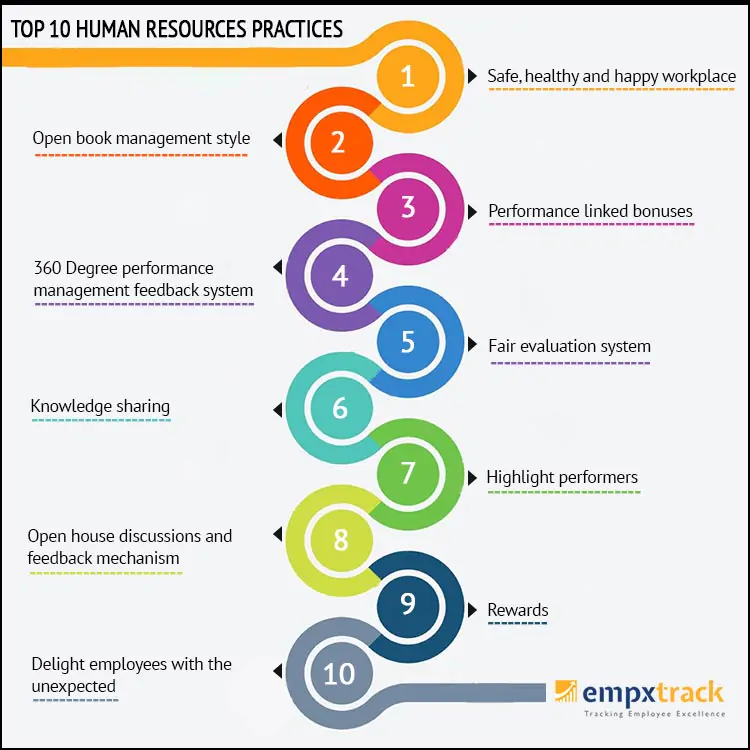
Articles
How to Create HR Policies: A Basic Guide for Businesses

Learning how to create HR policies can be an intimidating process for entrepreneurs, founders, managers, and operational leaders. It requires forethought and a deep understanding of the business goals to create effective policies that will help grow and scale your business.
With this blog post, we'll explore how to create HR policies with ease while providing effective onboarding, offboarding, and training experiences for employees. Let's learn how to create HR policies together.
Why Are HR Policies Important?
Human resource policies are the guidelines and procedures that employers create to ensure their employees have a safe, productive, and positive work environment. They provide structure for how an organization runs its operations and set expectations for employee behavior. Human resource policies also protect both the employer and employee from potential legal issues.
What Are HR Policies?
HR policies are written documents that outline rules, regulations, benefits, job descriptions, performance reviews, disciplinary actions, and other aspects of employment within an organization. These documents help employers manage their workforce by applicable laws while ensuring fairness across all employees.
The scope of HR policies can range from general workplace conduct to specific details such as vacation time or dress code requirements. It is important to note that these policies should be regularly reviewed by management to ensure they remain up-to-date with changing labor laws or industry standards.
Why Are HR Policies Important?
Having well-defined HR policies helps organizations maintain compliance with relevant labor laws while providing consistency in how they treat their employees. This ensures everyone is treated fairly regardless of race, gender, or any other protected class status according to federal law.
Additionally, having clear expectations outlined in writing reduces misunderstandings between managers and staff members. This can lead to improved morale among workers who feel valued when they know what’s expected of them at work each day.
Finally, detailing your essential HR policies makes it easier for companies to defend themselves against potential lawsuits if an employee ever feels wronged by the company’s practices or decisions made about them due to a lack of clarity around those matters beforehand.
What Are The Signs Of Effective HR Policies?
Effective human resources policies will be tailored specifically toward your business needs while remaining compliant with applicable state and federal labor laws. This means not only taking into account current legislation but also anticipating future changes so you don't get caught off guard down the line.
Effective human resource policies also outline clearly defined roles and responsibilities as well as consistent enforcement. By developing HR policies that are fair, no one should feel like certain rules apply differently depending on who's enforcing them.
Effective communication channels should be established between management & staff so everyone knows where they stand & there's never any confusion over policy updates or changes — transparency is key here!

How to Create HR Policies
Defining Your Company’s Culture
Establishing a strong culture is essential for any business, regardless of size. Establishing a clear set of values that reflect your mission and vision is key to establishing an effective company culture.
To define your company’s culture, start by articulating core values that align with your mission and vision. Then communicate these values to all employees so they understand the expectations from day one.
From there, develop HR policies that support those values such as dress code guidelines or rules about taking breaks during work hours. Finally, make sure you provide regular feedback on performance to reinforce desired behaviors and ensure everyone is held accountable for upholding the established standards.
Creating an Employee Handbook
An employee handbook is essential for any business, regardless of size. This document should serve as a comprehensive yet concise guidebook outlining important information such as benefits packages, workplace safety protocols, vacation policies, and more. It should also be easily updateable when necessary.
Content to include are:
- Job descriptions and duties.
- Attendance requirements.
- Anti-discrimination measures.
- Dispute resolution procedures.
- Leave of absence policies.
- Social media usage regulations.
- Drug testing policies (if applicable).
- Disciplinary action processes.
Make sure your handbook covers all the bases without overwhelming readers.
Performance Reviews
Performance reviews are an important part of managing employees since they allow managers to assess progress toward goals while providing valuable feedback on areas needing improvement or recognition for accomplishments achieved over time. To ensure successful performance reviews, start by setting clear expectations upfront regarding job responsibilities along with measurable objectives so both parties can track progress throughout the review period easily.
Additionally, establish a timeline for when reviews will take place (e.g., annually) so everyone knows when evaluations will occur ahead of time. This helps avoid surprises down the line. Develop a system where managers can provide honest feedback without fear of retribution to encourage open dialogue between employers/employees which ultimately leads to better results overall.
By learning how to create HR policies, companies can create a strong foundation for their employees and ensure that everyone is on the same page. With this groundwork in place, businesses are now ready to focus on onboarding new employees and creating an effective orientation program.
Training Existing Employees
Designing effective training programs for existing employees is key to their success. Tailoring training to the individual and their specific objectives is essential for achieving success. To ensure that these programs are successful, it’s important to focus on topics such as utilizing technology for learning management systems (LMS), encouraging continuous learning, and designing effective training programs.
When it comes to utilizing technology for LMS, companies need to invest in quality software that can help them manage their employee's learning processes more efficiently. Employees can be provided with the opportunity to learn at their own pace through access to online tutorials, virtual classrooms, video conferencing tools, and other digital resources. Additionally, incorporating gamification into the system can help motivate employees by providing rewards or recognition when they complete tasks successfully.
Continuous learning is also essential for businesses looking to stay competitive in today’s market. Fostering a culture of collaboration and innovation in the workplace can be achieved by creating an atmosphere where personnel feels comfortable raising queries and exchanging thoughts.
Providing regular feedback sessions with supervisors or managers helps keep employees engaged while allowing them the opportunity to ask questions about new skills or techniques they may have learned during training sessions or workshops.
Finally, designing effective training programs requires carefully considering how best each employee learns most effectively. This can include hands-on activities such as role-playing scenarios or lectures from experts in a particular field of study. By utilizing thoughtful planning and proper implementation of these components, you can generate an interesting program that will give your personnel the necessary skills for current and future success.
Conclusion
Learning how to create HR policies is an essential step in ensuring the success of any business. It sets a standard for onboarding, offboarding, and training employees that will ensure everyone is on the same page when it comes to expectations and responsibilities.
Crafting explicit, particularized policies tailored to the company's needs can help foster a supportive and appreciative atmosphere for sustained prosperity.
Are you an entrepreneur, founder, manager, or operational leader looking to scale your business? Trainual is here to help! Our business playbook software is designed to provide superior onboarding, offboarding, and employee training experiences.
We'll ensure that your team members have the knowledge they need for success while streamlining processes and policies. With our customizable solution tailored specifically for you, take control of your organization today with Trainual's top-notch services.
Similar Blog Posts







